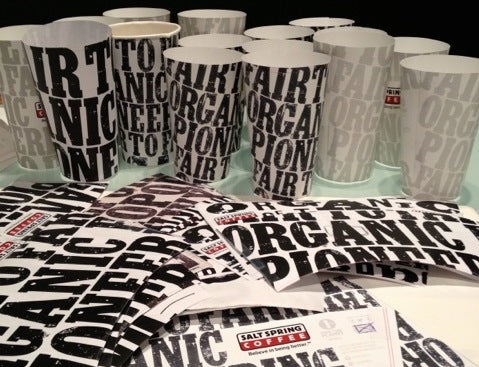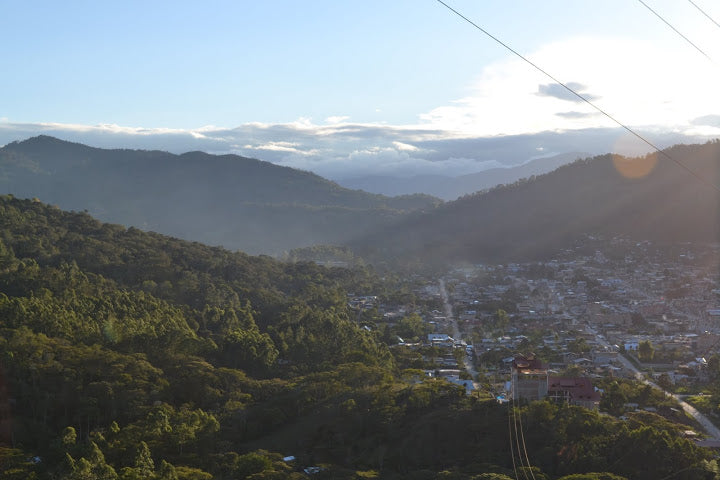
People Power: The Best Solution to Coffee Cup Waste

When you’re given the choice between paper or plastic bags at the grocery store, what’s the best option? Neither of course, because you’ve brought your own. The same is true for coffee cups. Salt Spring Coffee has been searching for a green paper coffee cup for nearly ten years and while we haven’t yet found the ultimate solution, we’ve learned a lot along the way.
The search began in 2003 when we tested out craft paper coffee cups at our Ganges cafe. These unbleached paper cups contained fewer chemicals than standard cups and were easier on the environment, but in the end they had many defects and were not a good solution for serving hot coffee. More recently we looked into biodegradable cups, which seemed to be the most promising technology to date. But after much exploration and many conversations we realized there was a big problem: the lining of the cup is made of a corn-based bio-plastic which the manufacturer cannot guarantee originates from non-genetically modified corn crops. Although no traces of genetic material are present in the final product, Salt Spring Coffee maintains that genetically modified foods have no place in modern agriculture, therefore we can’t support this product without being sure the entire manufacturing/production process is free of genetically modified organisms (GMOs). Further, consumers should have the information required to make the choice to avoid GMO products so we have included a GMO-Free claim on our cup design since February of 2013, as an added measure of transparency.
The search continues today. In the Spring of 2014 we launched a 24% “postconsumer fiber” cups. The 24% PCW cups are the first to used by a Cafe or Roaster in Canada, and they represent an important step for us, as pioneers in the journey to sourcing sustainable paper cups. Postconsumer “fiber” or “waste” (PCW) refers to fibrous materials that have gone through the entire consumer lifecycle. Post-consumer waste is distinguished from pre-consumer waste, which has been commonly used across industries in the manufacturing process, but doesn’t result in a reduction of landfill waste.
Although we’ve come a long way in this journey, it’s not over. It may well be that the best solution to keeping coffee cups out of the landfill is a behavioural one. Going back to shopping bags, many more people bring their own bag than a decade ago, and most grocery stores sell reusable bags at the till. Fellow 1% for the Planet member Bagless BC has a great initiative underway to make BC plastic bag free, and the City of Vancouver is also looking at joining the movement to ban plastic bags. Can we set the problem with disposable coffee cups on a similar trajectory to decrease the 4,478 tonnes of paper coffee cups tossed in the bin in Metro Vancouver each year? In a 2010 article in the Vancouver Sun, a representative of the Recycling Council of BC said “we need to reach a critical mass so it’s no longer cool to be seen carrying a disposable cup,” we agree.
In the ongoing transition to better business practices, much of the responsibility rests with companies to source sustainable products and to continue leading change – something that is core to Salt Spring Coffee’s values. But consumers have a hugely important role to play as well with their power to change their behaviours and ultimately shift the status quo. So while we always have our eye on the technical side of solutions, don’t forget your travel mug, encourage others to bring their own cup, and enjoy your coffee.
The post People Power: The Best Solution to Coffee Cup Waste appeared first on Salt Spring Coffee.

